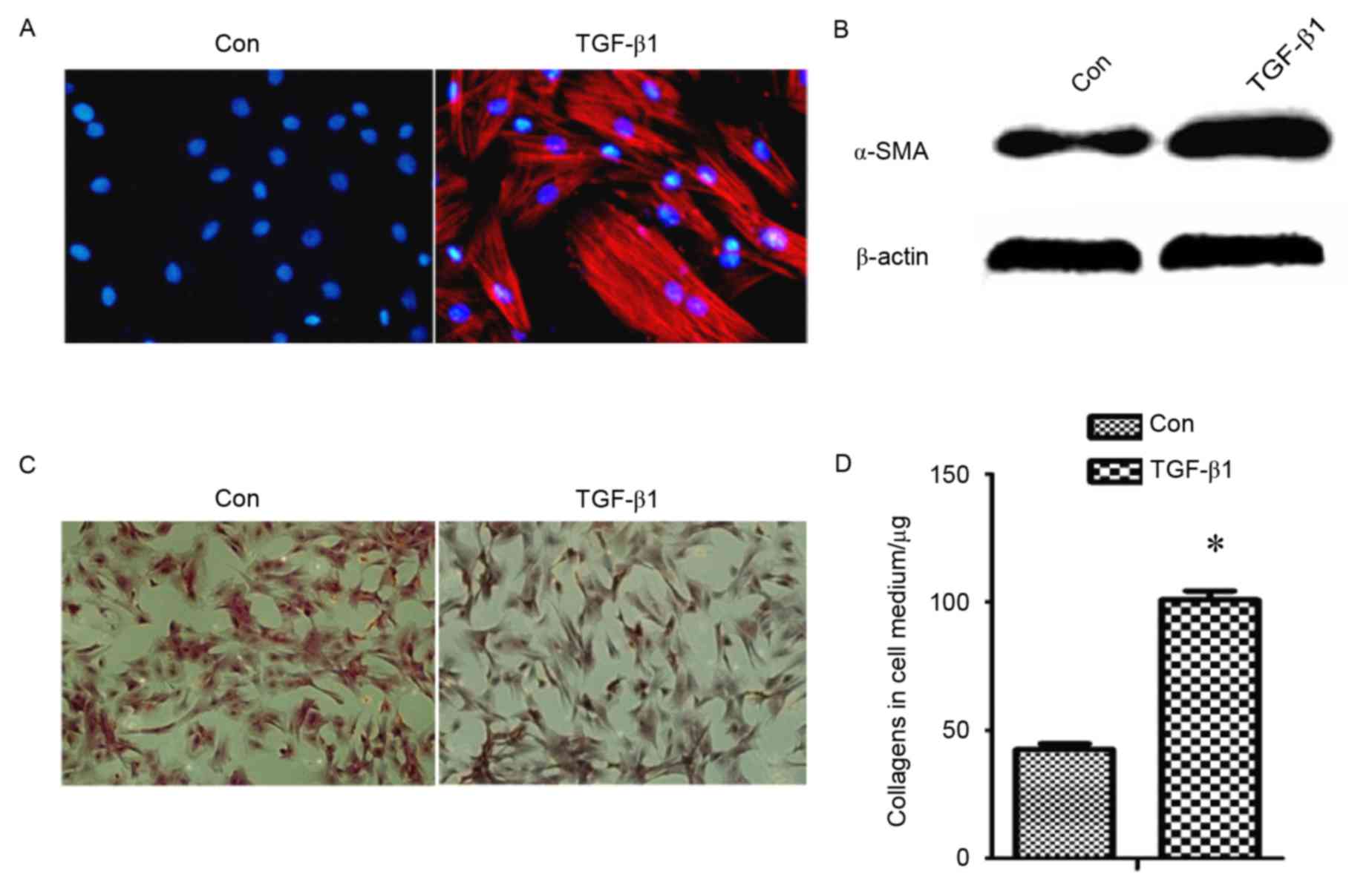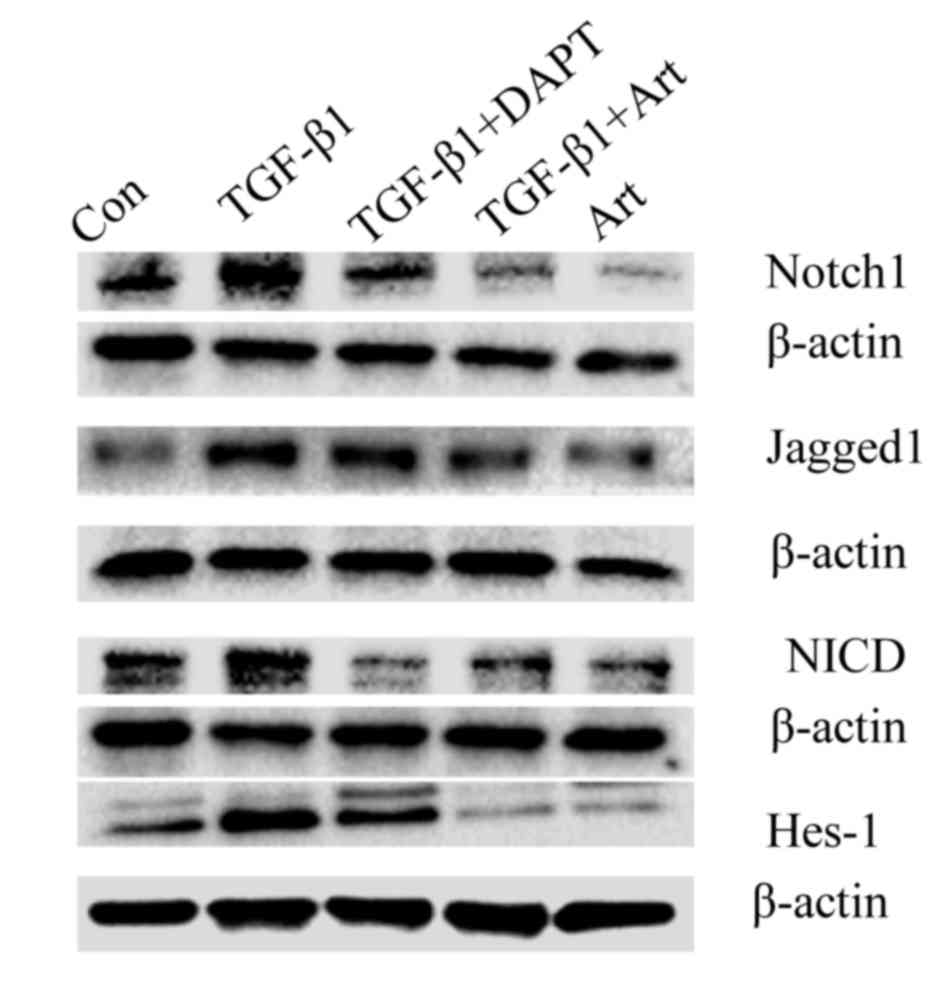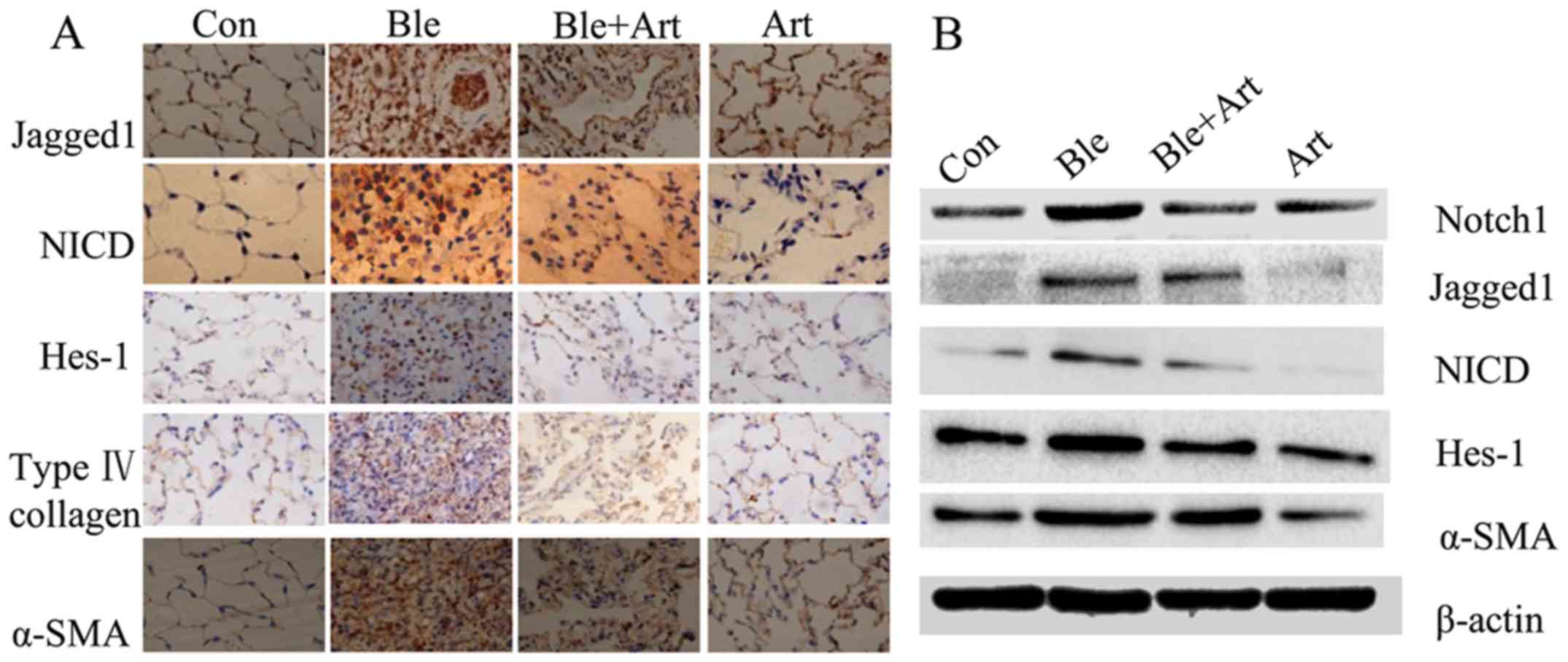Artesunate ameliorates lung fibrosis via inhibiting the Notch signaling pathway
- Authors:
- Published online on: June 8, 2017 https://doi.org/10.3892/etm.2017.4573
- Pages: 561-566
-
Copyright: © Liu et al. This is an open access article distributed under the terms of Creative Commons Attribution License.
Metrics:
Total
Views: 0 (Spandidos Publications: | PMC Statistics:
)
Total PDF Downloads: 0 (Spandidos Publications: | PMC Statistics:
)
Abstract
The present study aimed to determine the underlying molecular mechanism of the antifibrotic effect of artesunate in pulmonary fibrosis (PF). Primary lung fibroblasts were isolated from the lung tissues of rats, and treated with artesunate (8 µg/ml) and transforming growth factor (TGF)‑β1 (5 ng/ml). For in vivo experiments, the rats were administered bleomycin intratracheally, followed by daily intraperitoneal artesunate injections for 27 days. Western blotting, and immunohistochemical and immunofluorescent staining were used to assess the expression of key components of the Notch signaling pathway, including α‑smooth muscle actin (α‑SMA) and type IV collagen. Artesunate (8 µg/ml) was identified to inhibit TGF‑β1‑induced α‑SMA and collagen protein expression, and repress the Notch signaling pathway, in primary lung fibroblasts. Downregulation of α‑SMA and collagen by artesunate was associated with inhibition of the Notch signaling pathway. The daily intraperitoneal injection of artesunate (1 mg/kg) in rats was determined to inhibit bleomycin‑induced overexpression of α‑SMA and type IV collagen proteins, and inhibit the Notch signaling pathway, in lung tissues. In conclusion, the results of the current study indicate that artesunate inhibits the TGF‑β1‑induced differentiation of rat primary lung fibroblasts into myofibroblasts and ameliorates bleomycin‑induced PF. In addition, the results of the present study suggest that the underlying molecular mechanism for these effects of artesunate is repression of the Notch signaling pathway.














